General
How to Find a Trusted Financial Advisor Near You (Global Guide)

Embark on a journey to uncover the secrets of finding a reliable financial advisor with our comprehensive guide. This topic delves into the intricate world of financial advisory, offering valuable insights and practical tips for those seeking trustworthy guidance in managing their finances.
Delve into the nuances of selecting a financial advisor that aligns with your needs and preferences, ensuring a secure and informed decision-making process.
Researching Financial Advisors
Researching financial advisors before making a decision is crucial to ensure you choose a trusted professional who can help you achieve your financial goals. By conducting thorough research, you can make an informed decision and feel confident in your choice.
Here are some key factors to consider when researching financial advisors:
Qualifications and Credentials
When researching financial advisors, it is essential to look into their qualifications and credentials. Check if they are certified financial planners (CFP), chartered financial analysts (CFA), or have other relevant certifications that demonstrate their expertise in the field.
Experience and Track Record
Consider the experience and track record of financial advisors you are researching. Look for professionals who have a proven track record of helping clients achieve their financial goals and have experience dealing with situations similar to yours.
Fee Structure and Transparency
It is important to understand the fee structure of financial advisors you are considering. Make sure they are transparent about their fees and how they are compensated for their services. Avoid advisors who have hidden fees or conflicts of interest.
Client Reviews and Referrals
Read client reviews and ask for referrals when researching financial advisors. Hearing from other clients about their experiences can give you valuable insights into the advisor's communication style, responsiveness, and overall satisfaction with their services.
Regulatory Compliance
Check if the financial advisor you are researching is registered with regulatory bodies such as the Securities and Exchange Commission (SEC) or the Financial Industry Regulatory Authority (FINRA). This ensures they adhere to strict ethical and professional standards.
Sources of Information
When researching financial advisors, reliable sources of information include websites such as the Certified Financial Planner Board of Standards, the Securities and Exchange Commission, and professional associations like the Financial Planning Association. These sources can provide you with valuable information to help you make an informed decision.
Qualifications and Credentials
When searching for a trusted financial advisor, one of the most important factors to consider is their qualifications and credentials. This ensures that the advisor has the necessary knowledge and expertise to provide sound financial advice and guidance.
Common Certifications and Qualifications
There are several certifications and qualifications that you should look for when choosing a financial advisor. Some of the most common ones include:
- Certified Financial Planner (CFP): This certification indicates that the advisor has met rigorous standards of education, experience, and ethics in the field of financial planning.
- Chartered Financial Analyst (CFA): A CFA designation signifies expertise in investment management and financial analysis.
- Chartered Financial Consultant (ChFC): This qualification focuses on comprehensive financial planning, insurance, and estate planning.
- Registered Investment Advisor (RIA): Advisors with this registration are held to a fiduciary standard, meaning they must act in the best interests of their clients.
Comparison of Credentials and Certifications
While each certification or qualification has its own unique focus, they all demonstrate a certain level of expertise and commitment to the financial advisory field. The CFP designation, for example, is geared towards holistic financial planning, while the CFA designation is more specialized in investment analysis.
It's essential to consider the specific needs of your financial situation when evaluating the credentials of a potential advisor.
Reviews and Recommendations
When looking for a trusted financial advisor, reviews and recommendations play a crucial role in helping you assess their credibility and reliability. Hearing about the experiences of others who have worked with the advisor can give you valuable insights into what to expect.
Where to Find Genuine Client Reviews and Recommendations
- Check online platforms: Websites like Yelp, Google Reviews, or the advisor's own website may have client testimonials.
- Ask for referrals: Reach out to friends, family, or colleagues who have used financial advisors and ask for recommendations.
- Professional organizations: Look for reviews on reputable financial advisor directories or associations.
How to Evaluate and Analyze Reviews Effectively
- Look for patterns: Pay attention to recurring themes in reviews, both positive and negative.
- Consider the source: Verify the credibility of the review source to ensure authenticity.
- Check for specifics: Detailed reviews that mention specific services or outcomes can be more informative.
- Beware of biases: Keep in mind that some reviews may be biased, so consider a range of opinions.
Meeting Potential Financial Advisors

When it comes to finding a trusted financial advisor, meeting them in person is a crucial step in the decision-making process. A face-to-face meeting allows you to assess their qualifications, experience, and overall compatibility with your financial goals.
Key Questions to Ask
- Can you provide details about your experience and qualifications?
- How do you charge for your services?
- What is your investment philosophy?
- Can you explain how you will tailor your advice to my specific financial situation?
- Do you have any potential conflicts of interest?
Importance of Face-to-Face Meeting
Meeting a financial advisor in person allows you to gauge their professionalism, communication style, and overall trustworthiness. It also provides an opportunity to ask detailed questions and get a sense of their approach to financial planning.
Checklist for Evaluating Compatibility
- Evaluate their communication skills and ability to explain complex financial concepts clearly.
- Assess their willingness to listen to your financial goals and concerns.
- Review their track record and client testimonials for references and recommendations.
- Consider their fee structure and ensure it aligns with your budget and financial objectives.
- Trust your instincts and assess whether you feel comfortable and confident working with them.
Fee Structures and Transparency
When choosing a financial advisor, understanding their fee structure and level of transparency is crucial to building trust and ensuring you are getting value for your money.
Different Fee Structures and Implications
- Commission-Based: Advisors earn commissions from recommending specific financial products. This may lead to conflicts of interest, as they may prioritize products that benefit them financially over what is best for you.
- Fee-Only: Advisors charge a flat fee or a percentage of assets under management. This structure eliminates conflicts of interest and ensures advisors are working in your best interest.
- Fee-Based: Advisors charge a fee for their services but can also earn commissions on certain products. This hybrid model may create conflicts of interest.
Red Flags in Fee Structures
- Hidden Fees: Be wary of advisors who are not transparent about all the fees involved, including any hidden costs.
- High Commissions: Advisors pushing high-commission products without fully disclosing the impact on your investments.
Examples of Transparent Fee Structures
- Flat Fee: A straightforward fee for services provided, clearly Artikeld at the beginning of the engagement.
- Hourly Rate: Charging by the hour for advice given, ensuring you only pay for the time spent.
- Percentage of Assets Under Management: A clear percentage fee based on the assets your advisor manages for you, aligning their interests with yours.
Regulatory Compliance and Disciplinary History
When selecting a financial advisor, it is crucial to consider their regulatory compliance and disciplinary history. This information can provide valuable insights into the advisor's track record and help you make an informed decision about entrusting them with your finances.It is recommended to check the regulatory compliance of a financial advisor with relevant authorities or organizations.
This can include verifying if the advisor is registered with regulatory bodies such as the Securities and Exchange Commission (SEC) or the Financial Industry Regulatory Authority (FINRA). These organizations maintain databases that allow you to look up an advisor's registration status and any disciplinary actions taken against them.
Interpreting Disciplinary History
When reviewing a financial advisor's disciplinary history, it is important to consider the nature of the infractions and how recent they are. Minor violations or complaints that were resolved satisfactorily may not necessarily be a cause for concern. However, repeated or serious infractions could indicate a pattern of misconduct that may pose a risk to your financial well-being.It is essential to carefully evaluate the information on a financial advisor's disciplinary history and weigh it against other factors when making your decision.
By conducting thorough research and due diligence, you can ensure that you are working with a trusted and reputable advisor who has your best interests at heart.
Closure
In conclusion, the quest for a trusted financial advisor near you involves thorough research, scrutiny of credentials, and insightful reviews to make an informed choice. By following the guidelines provided in this guide, individuals can navigate the complex landscape of financial advisory with confidence and clarity.
Clarifying Questions
How can I verify the qualifications of a financial advisor?
You can verify a financial advisor's qualifications by checking for certifications like CFP (Certified Financial Planner) or CFA (Chartered Financial Analyst) and ensuring they are registered with regulatory bodies like SEC or FINRA.
What are some red flags to watch out for in fee structures of financial advisors?
Red flags in fee structures include hidden fees, high commission rates, and lack of transparency regarding how the advisor is compensated. Transparent fee structures should clearly Artikel how the advisor earns their fees.
Where can I find information about a financial advisor's compliance record?
You can find information about a financial advisor's compliance record on regulatory websites like SEC's Investment Adviser Public Disclosure (IAPD) database or through FINRA's BrokerCheck tool. These platforms provide details on any disciplinary actions or complaints against the advisor.
General
Exploring the Beauty of Hardie Cobblestone
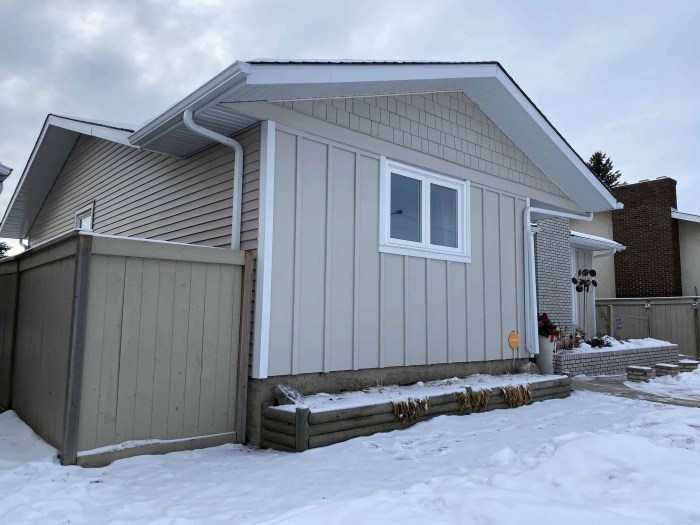
Introducing the versatile material of Hardie Cobblestone, this paragraph aims to intrigue and inform readers about its unique characteristics and wide range of applications in construction.
As we delve deeper into the topic, you will discover the benefits, installation process, maintenance tips, and more about Hardie Cobblestone.
Introduction to Hardie Cobblestone
Hardie Cobblestone is a type of durable and versatile building material made by James Hardie. It is designed to replicate the look of traditional cobblestone, offering a classic and timeless aesthetic for various construction projects.
Characteristics of Hardie Cobblestone
- Durable: Hardie Cobblestone is resistant to rotting, warping, and cracking, making it a long-lasting option for exterior applications.
- Authentic Look: It closely resembles the appearance of natural cobblestone, providing a rustic charm to buildings.
- Lightweight: Despite its robust nature, Hardie Cobblestone is lightweight, making it easier to handle and install.
- Low Maintenance: This material requires minimal upkeep, reducing the need for constant repairs or replacements.
Applications of Hardie Cobblestone in Construction
- Exterior Wall Cladding: Hardie Cobblestone can be used to enhance the exterior façade of buildings, adding texture and visual interest.
- Pathways and Walkways: It is ideal for creating charming pathways, walkways, and driveways, giving a classic cobblestone look without the high maintenance.
- Columns and Pillars: Hardie Cobblestone can be applied to columns and pillars to create a timeless architectural feature.
- Landscaping: It can also be used in landscaping projects to border flower beds, create retaining walls, or add decorative elements to outdoor spaces.
Benefits of Hardie Cobblestone
Hardie Cobblestone offers a range of advantages compared to traditional cobblestone options. Its durability, eco-friendliness, and low maintenance requirements make it a popular choice for many homeowners and landscapers.
Durability
- Hardie Cobblestone is made from fiber cement, a material known for its strength and resilience.
- It can withstand harsh weather conditions, including extreme heat, cold, and moisture, without cracking or fading.
- Unlike traditional cobblestone, Hardie Cobblestone does not require sealing or regular maintenance to keep it looking like new.
Environmentally Friendly
- Hardie Cobblestone is made from sustainable and recyclable materials, reducing its environmental impact.
- It does not release harmful chemicals or emissions into the environment, making it a safe choice for both people and nature.
- By choosing Hardie Cobblestone, you can contribute to a more eco-friendly and sustainable landscaping solution.
Installation Process
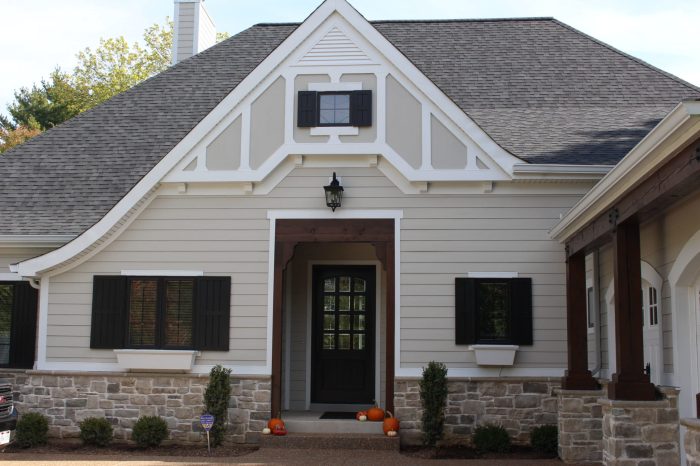
Installing Hardie Cobblestone requires careful preparation and attention to detail to ensure a successful outcome. Below is a step-by-step guide on how to install Hardie Cobblestone, the tools and materials needed, and the importance of proper preparation.
Step-by-Step Guide
To install Hardie Cobblestone:
- Clean the surface where the cobblestones will be installed, ensuring it is free of dirt, debris, and any other contaminants.
- Prepare the area by leveling the ground and compacting it to create a stable base for the cobblestones.
- Begin laying the cobblestones in your desired pattern, making sure to leave space between each stone for grout.
- Secure the cobblestones in place using a suitable adhesive or mortar, following the manufacturer's instructions.
- Fill the gaps between the cobblestones with grout, making sure to remove any excess grout before it dries.
- Allow the installation to dry and cure according to the recommended time frame before walking or driving on the surface.
Tools and Materials Needed
Before starting the installation, you will need the following tools and materials:
- Trowel
- Level
- Rubber mallet
- Grout
- Adhesive or mortar
- Cleaning supplies
- Protective gear
Importance of Proper Preparation
Proper preparation is essential before installing Hardie Cobblestone to ensure a durable and long-lasting finish. By cleaning and leveling the surface, you create a stable base for the cobblestones, preventing shifting or unevenness over time. Additionally, following the recommended installation steps and using the right tools and materials will help you achieve a professional-looking result that enhances the beauty of your outdoor space.
Maintenance and Care
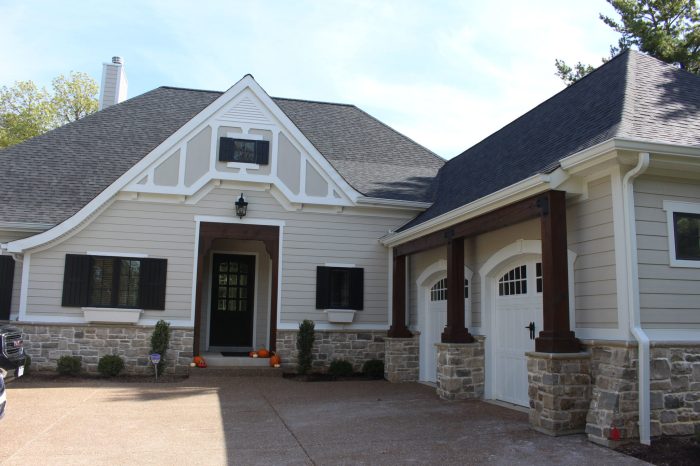
Maintaining your Hardie Cobblestone is essential to ensure its longevity and aesthetic appeal. Proper care can also help prevent costly repairs in the future.To keep your Hardie Cobblestone looking its best, here are some maintenance tips and guidelines:
Cleaning and Preservation
- Regularly sweep or hose down the cobblestones to remove dirt, debris, and leaves.
- Use a mild detergent and water to scrub any stubborn stains or marks on the surface.
- Avoid using harsh chemicals or abrasive cleaners that could damage the cobblestones.
- Consider applying a sealant to protect the surface and enhance the color of the cobblestones.
Common Issues and Solutions
-
Issue:
Cracks or chipping on the cobblestones.
-
Solution:
Fill in the cracks with a suitable patching compound and repaint if necessary to maintain the appearance.
-
Issue:
Moss or algae growth on the surface.
-
Solution:
Use a mixture of water and bleach to clean and inhibit further growth of moss or algae.
-
Issue:
Fading or discoloration over time.
-
Solution:
Apply a UV-resistant sealant to protect the cobblestones from sun exposure and maintain their color.
Wrap-Up

In conclusion, Hardie Cobblestone emerges as a durable, environmentally friendly option for various construction projects, offering both aesthetic appeal and practicality.
Query Resolution
Is Hardie Cobblestone suitable for outdoor use?
Yes, Hardie Cobblestone is designed to withstand outdoor conditions and is perfect for pathways, driveways, and more.
How does Hardie Cobblestone compare to natural cobblestone in terms of durability?
Hardie Cobblestone is known for its exceptional durability, outlasting traditional cobblestone and requiring less maintenance over time.
What are the common maintenance tasks for Hardie Cobblestone?
Regular cleaning and occasional sealing are recommended to preserve the beauty and longevity of Hardie Cobblestone.
General
Exploring the World of Primary Care Physician Online Consultations

With primary care physician online consultations taking center stage, readers are in for an insightful journey into the realm of virtual healthcare. As technology continues to shape the way we access medical care, understanding the significance and benefits of online consultations is crucial.
Delving into the advantages, process, patient experiences, and the future of primary care physician online consultations, this exploration promises to shed light on the evolving landscape of healthcare services.
Overview of Primary Care Physician Online Consultations

Online consultations with primary care physicians have become increasingly popular in recent years, offering patients a convenient and efficient way to access medical care from the comfort of their own homes. This innovative approach to healthcare delivery has revolutionized the traditional doctor-patient interaction and has numerous benefits for both patients and healthcare providers.
Significance of Online Consultations in Primary Care
Online consultations play a crucial role in expanding access to primary care services, especially for individuals with limited mobility, those living in rural areas, or patients with busy schedules. By eliminating the need for in-person visits, online consultations help bridge the gap between patients and healthcare providers, ensuring timely and efficient care delivery.
Benefits of Accessing Primary Care Physicians Online
- Convenience: Patients can consult with their primary care physician from anywhere, at any time, without the need to travel to a physical clinic.
- Time-saving: Online consultations reduce wait times and eliminate the need for long commutes, allowing patients to receive medical advice promptly.
- Cost-effective: Online consultations are often more affordable than in-person visits, as they eliminate transportation costs and time off work.
- Access to specialists: Online consultations can connect patients with specialists or second opinions more easily, ensuring comprehensive care.
- Follow-up care: Patients can easily follow up with their primary care physician online, promoting continuity of care and better health outcomes.
Advantages of Primary Care Physician Online Consultations
Online consultations with primary care physicians offer numerous advantages over traditional in-person visits. These advantages include increased convenience, improved access to healthcare, and more efficient use of time for both patients and healthcare providers.
Convenience Factors Associated with Online Consultations
- Eliminates the need for travel: Patients can consult with their primary care physician from the comfort of their own homes, saving time and money on transportation.
- Flexible scheduling: Online consultations allow patients to book appointments at convenient times, including evenings and weekends, without having to take time off work.
- Reduced wait times: With online consultations, patients can often see their physician promptly without having to wait in a crowded waiting room.
Improved Access to Healthcare
- Remote access: Online consultations make it easier for patients in remote or rural areas to access healthcare services without having to travel long distances.
- Accessibility for individuals with mobility issues: Patients with mobility challenges or disabilities can benefit from online consultations, as they can receive care without having to leave their homes.
- Continuity of care: Online consultations allow patients to stay connected with their primary care physician, ensuring consistent and timely access to medical advice and treatment.
Process of Primary Care Physician Online Consultations
Online consultations with primary care physicians involve several steps to ensure effective communication and quality care for patients. These virtual appointments are facilitated by specific technology that enables real-time interaction between patients and healthcare providers. Let's explore the process in more detail.
Scheduling and Conducting an Online Consultation
- Patients can schedule an online consultation through the healthcare provider's website or a designated telemedicine platform.
- After scheduling, patients receive a confirmation with the date and time of the appointment, along with instructions on how to join the virtual session.
- During the online consultation, patients connect with their primary care physician through video conferencing or secure messaging platforms.
- The physician conducts the consultation, asks relevant questions, discusses symptoms, and provides medical advice or treatment recommendations.
- Patients can ask questions, share concerns, and receive personalized care from the comfort of their own homes.
Technology Used for Virtual Appointments
- Primary care physicians use secure telemedicine platforms that comply with healthcare privacy regulations to conduct online consultations.
- These platforms may include video conferencing software, secure messaging systems, and electronic health record (EHR) integration for seamless communication and documentation.
- Patients can access the virtual appointment through a computer, smartphone, or tablet with a stable internet connection and a webcam.
- Technology ensures that patient information is protected, and the virtual consultation is conducted in a confidential and secure environment.
Prescriptions and Follow-up Care Management
- Primary care physicians can electronically prescribe medications to pharmacies for patients following an online consultation.
- Patients receive their prescriptions directly at the pharmacy of their choice, without the need for a physical visit to the doctor's office.
- Follow-up care and monitoring can be managed through virtual appointments, where patients can discuss treatment progress, report any concerns, and receive ongoing medical support.
- Physicians may recommend in-person visits for certain examinations or procedures that cannot be conducted virtually.
Patient Experience in Primary Care Physician Online Consultations
When it comes to online consultations with primary care physicians, patient experience plays a crucial role in determining the success and effectiveness of the virtual appointments. Here, we will delve into the various aspects of patient experience in primary care physician online consultations.
Importance of Effective Communication in Virtual Appointments
Effective communication is key in virtual appointments with primary care physicians as it ensures that patients are able to clearly express their symptoms, concerns, and medical history. Through clear and concise communication, patients can receive accurate diagnoses, appropriate treatment plans, and necessary guidance from their healthcare providers.
Patient Testimonials and Case Studies
- One patient, Sarah, shared her positive experience with online consultations, mentioning how convenient it was to receive medical advice from the comfort of her home.
- In a case study, John, who was dealing with a chronic condition, found online consultations to be a time-saving and efficient way to manage his health without frequent visits to the clinic.
Addressing Privacy and Security Concerns
Privacy and security are paramount in online consultations to ensure that patient data remains confidential and protected. Primary care physicians must use secure platforms and adhere to strict privacy protocols to safeguard patient information during virtual appointments.
Future of Primary Care Physician Online Consultations
As technology continues to advance, the future of primary care physician online consultations holds great potential for transforming the healthcare industry. Online consultations have already shown significant benefits in improving access to care and convenience for patients, but there are even more advancements on the horizon that could further revolutionize the way healthcare is delivered.
Advancements in Telemedicine for Primary Care
Telemedicine is constantly evolving, and we can expect to see advancements that enhance the virtual healthcare experience for both patients and providers. Innovations in wearable technology, remote monitoring devices, and artificial intelligence are likely to play a significant role in improving the quality and efficiency of online consultations.
Evolution of Online Consultations in Healthcare
With the increasing acceptance and adoption of telemedicine, online consultations are projected to become more integrated into the traditional healthcare system. This could lead to a shift in the way primary care is delivered, with a greater emphasis on virtual visits as a regular part of patient care.
Long-term Implications of Integrating Online Consultations
The integration of online consultations into primary care practices has the potential to improve health outcomes, reduce healthcare costs, and increase patient satisfaction. Beyond these immediate benefits, it could also pave the way for more personalized and patient-centered care, as well as greater access to healthcare services for underserved populations.
Summary
In conclusion, primary care physician online consultations offer a glimpse into the future of healthcare delivery, where convenience and accessibility are paramount. As telemedicine continues to expand its reach, embracing online consultations may pave the way for a more connected and efficient healthcare system.
Helpful Answers
What are the typical steps involved in scheduling an online consultation?
Patients usually register on the platform, choose a suitable time slot, pay for the consultation, and then join the virtual appointment at the scheduled time.
How are prescriptions managed in online consultations?
Primary care physicians can electronically send prescriptions to a patient's preferred pharmacy after an online consultation.
What advancements can we expect in telemedicine for primary care?
Future developments may include AI-assisted diagnostics, remote monitoring devices, and enhanced telecommunication technologies for more interactive consultations.
Exterior Design
Exploring the Beauty of James Hardie Aged Pewter
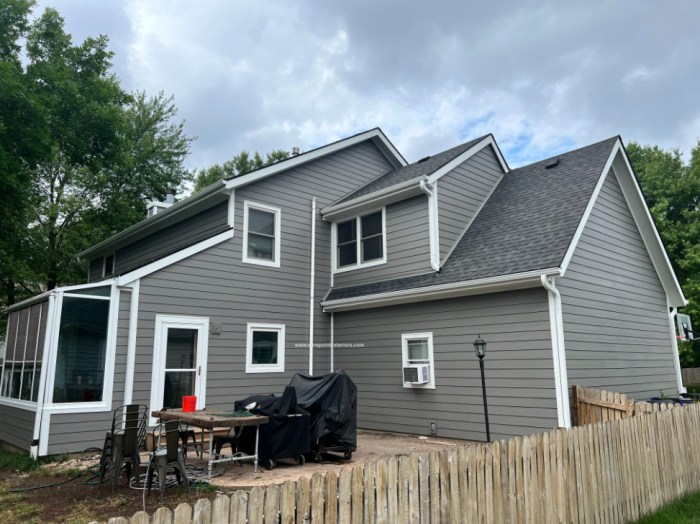
Delving into the world of James Hardie aged pewter, this captivating metal finish offers a unique charm that can transform any home design. From its distinctive color to its versatile texture, aged pewter brings a touch of elegance to architectural styles.
Let's unravel the allure of this timeless material.
Overview of James Hardie Aged Pewter
James Hardie Aged Pewter offers a unique color, texture, and finish that adds depth and sophistication to any home exterior. The color is a warm gray with subtle hints of green and brown, creating a timeless look. The texture is smooth and sleek, adding a modern touch to the design.
The finish is matte, providing a sophisticated appearance that complements various architectural styles.
Popularity and Versatility of Aged Pewter
Aged pewter has gained popularity in home design due to its versatility and ability to blend seamlessly with different architectural styles. Whether used on a traditional colonial home or a contemporary urban dwelling, aged pewter adds a touch of elegance and charm.
Its neutral tone allows for easy pairing with a wide range of colors, making it a versatile choice for homeowners looking to enhance their curb appeal.
Complementing Different Architectural Styles
- Aged pewter pairs beautifully with modern farmhouse architecture, creating a sleek and sophisticated look that contrasts with rustic elements.
- For Mediterranean-style homes, aged pewter adds a touch of understated luxury, complementing the warm tones and intricate details of the design.
- In coastal-inspired homes, aged pewter offers a subtle nod to nautical themes while maintaining a refined and classic appearance.
Installation and Maintenance

When it comes to installing and maintaining James Hardie aged pewter siding, proper care and attention are essential to ensure longevity and preserve its aesthetic appeal.
Installation Guide
- Prepare the surface: Make sure the surface is clean, dry, and free of any debris before starting the installation.
- Measure and cut: Accurately measure the dimensions of the area where the siding will be installed and cut the panels accordingly.
- Install the siding: Begin by installing the starter strip at the bottom of the wall and then work your way up, ensuring each panel is securely attached.
- Overlap and secure: Properly overlap the panels to allow for expansion and contraction, and secure them using the recommended nails or screws.
- Finish and seal: Once all the panels are installed, finish off the edges and corners neatly, and seal any gaps or joints to prevent water infiltration.
Maintenance Tips
- Regular cleaning: Periodically clean the siding with a mild detergent and water to remove dirt, dust, and other debris that can accumulate over time.
- Avoid harsh chemicals: Refrain from using abrasive cleaners or harsh chemicals that can damage the color and finish of the aged pewter siding.
- Inspect for damage: Routinely inspect the siding for any signs of damage, such as cracks or chips, and address them promptly to prevent further deterioration.
- Repainting: If the color starts to fade or wear off, consider repainting the siding with a compatible paint to restore its appearance and protect it from the elements.
Durability and Weather Resistance
When it comes to durability and weather resistance, James Hardie aged pewter siding is a top choice for homeowners looking for long-lasting performance and protection against the elements.Aged pewter siding is engineered to withstand various weather conditions, making it highly durable and resilient.
Here's how aged pewter stands up to different weather elements:
Durability Features of James Hardie Aged Pewter Siding:
- James Hardie aged pewter siding is made of fiber cement, a durable material that is resistant to rotting, warping, and cracking.
- It is also resistant to pests such as termites, ensuring that your siding remains intact and free from damage.
- The color of aged pewter is baked into the fiber cement during the manufacturing process, providing long-lasting color retention and protection against fading.
Weather Resistance of Aged Pewter Siding:
- James Hardie aged pewter siding is designed to withstand extreme temperature changes without expanding or contracting, ensuring its longevity in both hot and cold climates.
- It is also engineered to resist moisture, making it ideal for areas prone to heavy rain or humidity.
- The durability of aged pewter siding makes it highly resistant to wind damage, providing peace of mind during storms and high winds.
Longevity Compared to Other Siding Materials:
- Compared to vinyl siding, which can crack and fade over time, aged pewter siding offers superior durability and longevity.
- Wood siding is susceptible to rotting, warping, and insect damage, while aged pewter siding is resistant to these issues, providing a longer lifespan.
- Fiber cement siding, like aged pewter, is known for its longevity and low maintenance requirements, making it a cost-effective choice for homeowners in the long run.
Cost and Value
When considering the cost and value of James Hardie aged pewter siding, it's essential to look at both the initial investment and the long-term benefits it brings to your home.
Cost Factors
- Material Cost: Aged pewter siding from James Hardie may have a higher upfront cost compared to other siding options, but its durability and low maintenance requirements can lead to cost savings over time.
- Installation Cost: The installation of aged pewter siding may require professional help, which can add to the overall cost. However, the expertise ensures proper installation, maximizing the siding's lifespan.
- Maintenance Cost: Aged pewter siding is known for its low maintenance needs, reducing the cost of upkeep compared to other siding materials that may require frequent painting or repairs.
Value Added
- Curb Appeal: Aged pewter siding adds a sophisticated and timeless look to your home, enhancing its overall curb appeal and making it stand out in the neighborhood.
- Resale Value: Homes with high-quality siding like James Hardie aged pewter tend to have higher resale values due to the durability and aesthetic appeal it offers, attracting potential buyers.
Return on Investment
- ROI Calculation: While the initial cost of aged pewter siding may be higher, the long-term savings on maintenance and the increase in home value can result in a positive return on investment over time.
- Energy Efficiency: Aged pewter siding can also contribute to improved energy efficiency in your home, leading to lower energy bills and further enhancing the ROI.
Concluding Remarks
In conclusion, James Hardie aged pewter emerges as a durable and stylish siding option that enhances the aesthetic appeal of any property. Its weather resistance, easy maintenance, and lasting value make it a top choice for homeowners seeking longevity and beauty in their exterior design.
Explore the possibilities of aged pewter for a lasting impact on your home.
FAQ Explained
Is James Hardie aged pewter suitable for all architectural styles?
Yes, aged pewter's versatility allows it to complement a wide range of architectural designs, from traditional to modern.
How often should I clean aged pewter siding?
Regular cleaning with mild soap and water is recommended to maintain the appearance of aged pewter siding.
Does aged pewter siding require frequent repainting?
No, the color of aged pewter is durable and long-lasting, reducing the need for frequent repainting.
-

 General6 months ago
General6 months agoSmall Home Renovation Ideas: 5 Creative Ways to Maximize Space
-

 General8 months ago
General8 months agoAI-powered lifestyle design tools for home planning: Revolutionizing Efficiency and Customization
-

 General8 months ago
General8 months agoCaptivating Title: Interior and Exterior Design Ideas for Wellness Retreats
-

 General6 months ago
General6 months agoCaptivating Fire Pit Patio Design Ideas to Transform Your Outdoor Space
-

 General6 months ago
General6 months agoThe Ultimate Guide to the Best Architectural Rendering Services for High-End Real Estate
-

 General7 months ago
General7 months agoEco-Friendly House Paint Options: A Guide to Sustainable Painting Choices
-
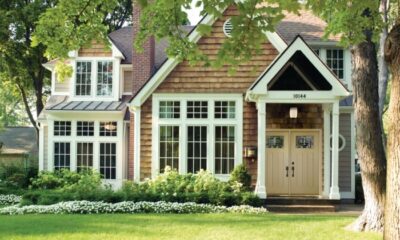
 General7 months ago
General7 months agoCrafting Energy Efficient Home Exteriors: A Guide to Sustainability
-

 General7 months ago
General7 months agoCrafting a Timeless Aura: Unveiling the Magic of Scandinavian Interior Design





